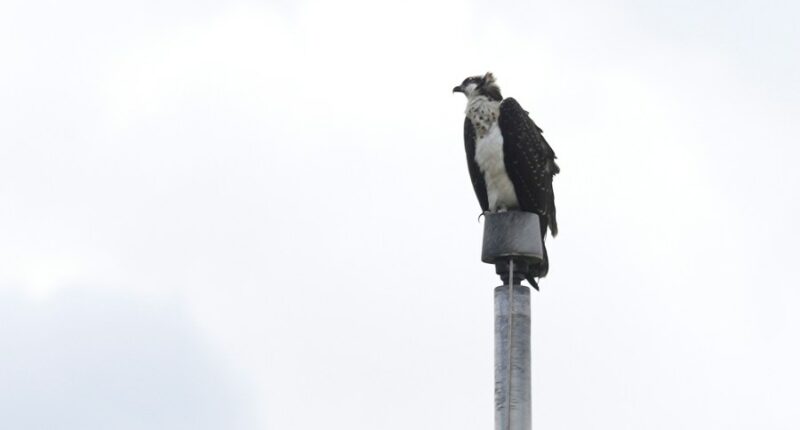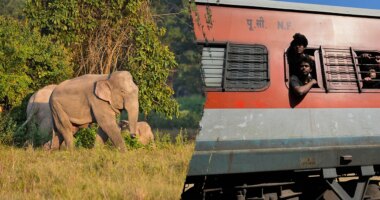Share this @internewscast.com

The fall sports season at a Minnesota high school has been interrupted by a pair of ospreys that decided to build a substantial nest on a light pole situated on the football field, where they intended to rear their chicks.
Because these migratory birds are legally protected at both state and federal levels, Apple Valley High School had to adjust their football and soccer schedules to daytime games. Using the floodlights at night was not an option since it might endanger the birds or cause a fire.
The school’s teams, fittingly named the Eagles, are collaborating with the state Department of Natural Resources to find a solution. They have been using a drone twice weekly to check on the chicks. Once the young ospreys mature and leave, the nest can be safely taken down, allowing for the return to Friday night games.
Heidi Cyr from the Department of Natural Resources mentioned that the nest could likely be removed in about a week since the young ospreys have already started flying.
Cory Hanson, the athletic director at the school near Minneapolis, shared that he observed up to four chicks in drone footage, noting they noticed the nest’s presence in June.
“Seeing these large birds carrying massive sticks across the field prompts curiosity,” Hanson said. “And when you see the nest, you realize it’s not just any ordinary bird.”
DNR officials confirmed it was an osprey nest, and told school officials that federal law made it clear that they could not disturb it for now.
So, Hanson said, they had no choice but to revise their schedules. But he said other schools have been great about finding alternate sites and times, despite their initial disbelief.
“When you tell someone this story of ‘Wow, we have to reschedule because there’s an osprey nest in our stadium,’ they’re like, ‘You can’t make this type of stuff up, right?’” he said.
According to the DNR, ospreys are one of the larger birds of prey that inhabit Minnesota, with wingspans of 4.5 to 6 feet (1.4 to 1.8 meters).
They’ll return to their nests every year and will build them up with new materials every season. Their nests can get as large as 10 feet deep (3 meters) and 3 to 6 feet (1 to 2 meters) in diameter. Their diet is almost exclusively live fish. They’ll dive from high altitudes to grab fish with their sharp talons, plunging as deep as 3 feet (1 meter) underwater.
Ospreys like to build their nests in high places with clear views, including dead old trees and structures that resemble them, like utility poles, channel markers and cellphone towers. That sometimes creates fire hazards. So the DNR issues a number of nest removal permits every year. But permission to remove nests that still hold young ospreys is normally denied unless there’s a major health and human safety concern. Stadium lighting doesn’t qualify, Cyr said.
Efforts to restore their population, which have included building nest platforms, have been a success in Minnesota and elsewhere. Cyr noted. They came off the state’s special concern list in 2015. Depending on the time of year, they can now be found across most of North America.
Once the chicks at Apple Valley fly off for good, Hanson said, school officials and the DNR will relocate the nest from the light tower to a new platform on school grounds in hopes that the parents will return next year. But just to be safe, they’ll also erect deterrents on the lights so the ospreys don’t try to nest there again.
“So if anyone sees that happening, don’t worry,” Cyr said. “The birds are safe. They’ve successfully left the nest and they’re on their way to becoming adults themselves.”
___
Associated Press writer Steve Karnowski reported from Minneapolis.

















